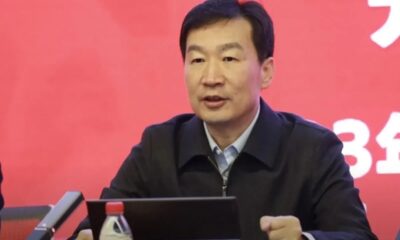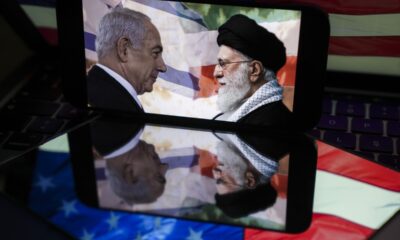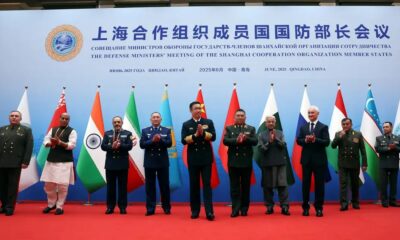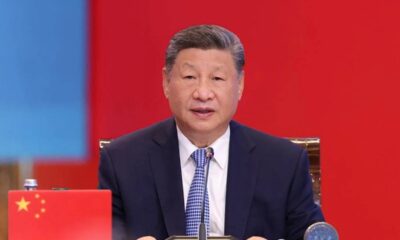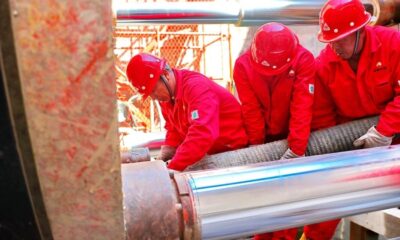Interview
‘China’s breakthrough no miracle, but result of patient development strategy’

Rémy Herrera, a researcher at the University of Panthéon-Sorbonne and the National Centre for Scientific Research (CNRS), the largest research centre in France and the largest basic research centre in Europe, assessed China’s development dynamics from the past to the present.
A former consultant to the OECD and the World Bank, economist Rémy Herrera is also a former secretary of the World Forum for Alternatives (WFA) and a member of the International Crisis Observatory (OIC).
One of France’s leading Marxist economists and one of the most important critics of neoclassical economics, Rémy Herrera analyses not only the financial and socio-economic causes of the crises of capitalism, but also the countries that have adopted different development models by choosing alternative political-economic approaches to capitalism. In his work, Herrera takes a historical perspective on economic developments in Asia and Latin America, particularly in China and Cuba, and challenges the Eurocentric approach of the neoliberal school in its economic analyses of developments in these countries.
Remy Herrera answered Ferhan Bayır’s questions on the Chinese economy.
Let’s start with your books on China. Based on your research and observations during your visits to China, how do you interpret the much-discussed Chinese miracle?
Many people who comment on the high growth rate of China’s gross domestic product (GDP) that has been observed for decades use the term “miracle” to describe this phenomenon. In my view, it is not a miracle, but rather the result of a development strategy that has been planned and patiently and effectively implemented by the state and senior officials in successive Communist Party-led governments in this country.
Almost everywhere, in academic circles and in the dominant mainstream media, we read and hear that the “rise” of the Chinese economy is due solely to its “opening up” to globalisation. I would like to add that such rapid growth was only possible thanks to the efforts and achievements of the Maoist era. This opening up to globalisation has been strictly and continuously controlled by the Chinese authorities. It is only under this condition (control) that the opening up to globalisation can be considered to have contributed to the country’s undeniable economic success. This opening to globalisation has been able to have such a positive impact on China in the long term because it has been fully consistent with a coherent development strategy and has been subject to the imperatives of meeting domestic objectives and domestic needs.
It must be clearly understood that without the development of such a development strategy, which was clearly the work of the Chinese Communist Party, and – it must not be forgotten – without the energy expended by the Chinese people in the revolutionary process of implementing this development strategy, if the Chinese Communist Party had integrated the country into the world capitalist system, it would inevitably have led to the complete destruction of its national economy, even of its own existence, as has happened in so many other countries of the South and East. We must remember one fundamental point: For more than a century before the victory of the revolution in October 1949, “opening up” for the Chinese people meant first and foremost capitulation, destruction, exploitation, humiliation, decadence and chaos.
How does China’s success differ from Western development models?
The success of the development strategy implemented by the Chinese government and the many positive effects it has brought to the people of this country stand in stark contrast to the failure of the neo-liberal economic policies implemented in Western countries, which have generally been economically, socially, culturally and even morally disastrous for workers in the countries of the North.
Let me give a concrete example. The strength of Chinese state-owned enterprises is that they are not managed like Western international companies. Listed on the stock exchange and operating according to the logic of shareholder value, share appreciation and rapid return on investment, which requires maximising dividends paid to owners, these Western companies operate by squeezing a chain of subcontractors, local or international. But Chinese state-owned groups do not behave in this way. If they did, they would be acting in a way that would harm local small and medium-sized enterprises and, more broadly, the entire national industrial fabric. The compass that guides the majority of China’s large state-owned enterprises to profit or become profitable is not the enrichment of private shareholders, but the prioritisation of productive investment and customer service. Ultimately, it does not matter to Chinese SOEs that their profits are lower than those of their Western competitors, as long as they serve higher, long-term or national strategic interests, including stimulating the rest of the local economy and looking beyond the immediate vision of profit generation.
Can this model be defined in terms of a neoclassical or neo-Marxist model?
First of all, I believe that the Chinese do not see their development strategy as a “model”, nor do they seek to impose or export their development strategy. They simply believe that there are certain lessons to be learnt by different peoples of the world, but that different peoples with their own specific historical, social and cultural conditions should determine the ends and means of their own development. This perspective is also very different from the Western vision, which wants its “model” to be followed by all the countries of the world.
Neoclassical models have no place in China. Allow me to add that neoclassical economics, which is the hegemonic current or mainstream in economics today, serves no other purpose than to provide a theoretical and pseudo-scientific justification for the implementation of neoliberal policies, an ideology that opposes the practice of social justice and the development of public services. In reality, neoclassical economics is not a science but a science fiction or, as I have argued in a recent book (Confronting Mainstream Economics for Overcoming Capitalism), an ideology that claims to be scientific.
On the other hand, I believe that Marxism has not yet been overcome scientifically. I do not think that Marxism has any serious competitors today. Marxism remains relevant, not least because we still live in a world where the capitalist system is globally dominant, although there have been significant changes, and where a careful explanation of these changes is needed. Despite the numerous attacks on Marxism since its emergence, and despite the repeated claims that it is obsolete – that it is dead – Marxism is enduring, resilient, I would say “indestructible”, and at the same time Marxism is the main theoretical reference point for those thinking about the ways and conditions for a better world. Despite its frequent dogmatisation and the disappearance of the USSR and the Soviet bloc, sometimes to its detriment, Marxism today retains its essence and remains an irreplaceable reference for those struggling for socialism. It is therefore not surprising that it remains an important theoretical reference for China.
Has China based the implementation of its economic model on theoretical foundations?
I would say that the Chinese development strategy, aimed at maintaining and deepening the socialist transition, is based on a theoretical combination of elements drawn from both the main philosophical currents of traditional Chinese thought (especially Confucianism and Taoism, but also various other currents) and a mixed Marxism reinterpreted and modernised in the Chinese style. But it must be understood that this theory is closely linked to the analysis of practical experience. All this (the aforementioned theoretical structure and the analysis of practical experience) has made it possible to provide answers and appropriate solutions to today’s challenges and, in particular, to the many contradictions arising from them.
The Chinese concept of “socialism of the new era” is patient, persistent, concrete, pragmatic and effective, and at the same time it is not Manichaean (evaluating situations and things in a dualism according to absolute principles of good and evil, without nuances and intermediate states); it knows the long term and is not afraid of confronting contradictions or oppositions (e.g. those related to individual initiative or entrepreneurship), which are seen as complementarities and potentials rather than exclusions and substitutes.
One of the lessons to be learnt from “Chinese Marxism” is the idea of seeking harmony between opposites, within man, between people, between man and nature. Chinese political discourse emphasises ‘social harmony’ and ‘stability’ as fundamental values, and the search for ‘compromise’ and ‘consensus’ as the means to achieve them.
There are many concepts in Chinese Marxism which differ from the concept of “class struggle” in Western Marxism, and which Western Marxism generally views with suspicion as characteristic of conservative regimes. To ignore these concepts is to forget their special meaning in Chinese thought as “reconciliation of opposites” and “positive dialectics”. These concepts mean, for example, that there is a dynamic balance between individual self-interest and social needs, between individual and collective interests, and between needs and moral demands. To simplify, we can say that since Mao, the Chinese have believed in a form of progress based on spiral development that tends to smooth out and mitigate contradictions. In this context, socialism ceases to be a project of perfection (a vision alien to Chinese thought, a vision that rebels against the absolute) and becomes a process of construction in motion.
How would you assess the similarities and differences between China’s economic model and that of the post-World War II Soviet Union and the countries of Eastern Europe or the Balkans?
For some years, the People’s Republic of China maintained a “Soviet-style economic model”, which was introduced immediately after the victory of the October Revolution in 1949. However, the PRC abandoned this model when it broke away from the USSR in the early 1960s. After joining the Council for Mutual Economic Assistance (CMEA or COMECON) in 1950, China left in 1961 and decided to formulate its own development strategy, on its own and for itself. And, frankly, it did so much more effectively than the Soviet Union or the countries of Central and Eastern Europe.
Between 1978 and 1982, China faced a series of economic problems that reflected the difficulties of the post-Mao transition and the implementation of the so-called “opening-up” structural reforms. In particular, the period 1985-1986 saw the introduction of the 1984 tax reform, which was one of the turning points towards a market economy. Then, during the collapse of the USSR and the Soviet bloc, there was a very short-lived experiment that could be described as “neo-liberal”, which was quickly interrupted and abandoned, but the result of this experiment was a sudden and severe economic downturn in 1990-1991, accompanied by an explosion of corruption. It must be acknowledged that the Chinese central government has since fought corruption with great vigour and some success. Fortunately, China has rejected the neo-liberal option that has devastated so many economies around the world. And it has chosen to maintain socialism, which today provides a measure of prosperity for the vast majority of its population.
To what extent do Western Marxists who claim that China has adopted capitalist methods correctly assess China’s financial/wealth growth?
In debates among Western Marxist writers, the vast majority of authors argue that the Chinese economy is capitalist. David Harvey, for example, says that he sees the Chinese economy as “neoliberalism with Chinese characteristics”, where since the 1978 reforms there has been a kind of market economy with more and more neoliberal components, operating within a framework of centralised control that he describes as very authoritarian. I disagree with him. Panitch and Gindin analyse the consequences of China’s integration into the world economic system and see it less as an opportunity for China to redirect global capitalism than as a repetition, this time by China, of the “complementary” role previously played by Japan in providing the United States with the capital flows necessary to maintain its global hegemony, which in turn has led to a tendency in China to liberalise financial markets, eliminate instruments to control capital movements and weaken the foundations of the power of the Chinese Communist Party. I think these writers are wrong.
Other Marxists, Chinese or foreign, certainly fewer in number but no less important, continue to argue that the political-economic system currently in place in China, although comparable or close to “state capitalism”, leaves open a wider range of possible trajectories for the future. For my part, I take this idea so far as to argue that the Chinese system today still contains the essential elements of socialism. Once this has been said, the interpretation of the nature of this system becomes compatible with “market socialism”, which in my view still rests on pillars that clearly distinguish it from capitalism. For my part, I would say that although there are capitalists in China (and there are many billionaires), it is not possible to describe the Chinese system as capitalist. Of course there are elements of “state capitalism”, but I prefer to speak of the Chinese system as “market socialism”, or rather “socialism with the market”. I think we have to take the Chinese seriously when they talk about “socialism with Chinese colours”. This is not just propaganda; it is a reality, it is their reality.
At the monetary and financial level, for example, it is worth noting that the Chinese authorities have been able to cope with the power of the financial markets, but they have also been able to build a “great wall of money” by defending the national currency, the yuan. They have managed to put money at the service of development. Very powerful strategic planning, whose techniques have been made more flexible, modernised and adapted to today’s needs, and thus much more effective, is a distinctive feature of the socialist path. State control of the currency and of all the major banks is a sine qua non, as is close supervision of the activities of financial institutions and of the behaviour of foreign companies operating in the country. Once again, it is the state that controls capitalism in China, not the other way round. At least that has been the case so far.
What is the significance of Deng Xiaoping for China today? Is there a connection or disconnection between Xi Jinping’s political and economic decisions and those of Deng Xiaoping?
Deng Xiaoping’s definitive rise to the pinnacle of power began in August 1977 with the 11th Congress of the Chinese Communist Party and the subsequent push for deep economic reform that began in late 1978. Deng’s idea was not to abandon socialism, but to find ways to lift the vast majority of Chinese out of poverty and enable the country to achieve what the establishment called a “moderately prosperous” society. Since Xi Jinping, the development strategy has been reaffirmed as socialist, and the country’s overall policy orientation has been more in favour of the less affluent sections of the population and the less developed regions of the country.
The difficulty in understanding “Chinese socialism” stems from the refusal of its leaders to interpret it as the banalisation of scarcity or the “sharing of misery”. What the leaders of the Chinese Communist Party sought to do, and succeeded in doing, was to lift the great mass of the Chinese people out of poverty under Mao and up to the level of a “moderately prosperous” society under Deng Xiaoping. Since then, as a logical continuation of the revolution, their desire has been to pursue a socialist transition in which the vast majority of the population now has access to prosperity, especially a wide range of consumer goods, and can enjoy abundance. Wouldn’t that be killing two birds with one stone and proving that socialism can and must overcome capitalism?
Could you elaborate on China’s economic growth?
It is wrong to say, as we often hear, that the high growth rate of gross domestic product (GDP) in the Chinese economy is due to the capitalism adopted since 1978. Quite the opposite. Economic growth has been high because the Chinese state, under the authority of the Communist Party, has managed to prevent capitalism from taking control of the country and, as a positive reflection of this, has redistributed wealth throughout society on a large scale. I should add that, even if we want to believe that the Chinese system is capitalist (which I do not), it would be wrong to claim that China’s high growth has only been observed since 1978. This is because the country’s economic growth was already very, very high under Mao, much higher than in any other country with a planned economy, and even higher than in many industrialised Western countries. Western leaders want to hide this fact because it is unbearable for them to admit that a socialist country can be successful, especially more successful than capitalist countries.
I have to say that the goal of the Chinese Communist Party is not to take over everything economically, but to maintain political control over everything. The two are not synonymous. Chinese leaders have repeatedly said that the coexistence of public and private activities, both encouraged within a mixed, hybrid system, is the chosen means to develop the country’s productive forces as much as possible and raise the level of development. The use of all means, including attracting foreign capital and importing advanced technologies, is not aimed at abandoning socialism, but at improving the living conditions of the population and deepening the process of socialist transition begun in 1949. Paradoxically, China remains a developing country, as evidenced by its still modest GDP per capita. This process will be long, difficult, full of contradictions and risks, and its course remains largely uncertain. However, I think it is worth stressing that this system still has many features that are clearly different from capitalism and which, in my opinion, are related to the realisation of a socialist project and the potential for its reactivation, which leads us to recommend taking the speeches of the country’s political leaders seriously.
Does China’s meeting with President Biden signal a shift from economic dominance to a more pronounced political presence in the international arena, especially in Africa, Latin America and the Middle East, and in its attitude towards Russia? Does China want to become the centre of a multipolar world?
China has no desire to replace the United States as the world’s dominant power. China has neither the will nor the mentality to do so. On the other hand, it is clear that China is trying to contribute to the construction of a multipolar world, as opposed to the unipolar world in which the United States has so far ruled unchallenged (and admittedly in a highly aggressive manner). China’s leaders seek universal peace and balance in international relations. But it is clear that they will defend their country’s sovereignty without submitting to foreign domination.
Regarding the “trade war” between the US and China, we have co-authored a paper with Chinese authors entitled “Turning One’s Loss Into a Win? The US Trade War With China in Perspective’, which we co-authored with Chinese authors, shows that the ratio of labour hours integrated into trade between the two countries since 1978, compared to the same amount of trade exchange, is higher in China than in the US, and that there is an unequal exchange of value between them in favour of the US and to the detriment of China. In other words, the fact that China has run an increasing bilateral trade surplus over the last decade should be seen in the light of the fact that (according to our calculations) it has benefited the United States in particular in terms of the labour hours included in exports.
In such a paradoxical context, the outbreak of the trade war against China in 2018 can be interpreted as an attempt by the US administration, then led by President Trump, to slow down the slow and steady deterioration of the US trade advantage vis-à-vis its main emerging rival, China.
How is China organising international economic relations for a multi-power world to counter US dominance? Given the examples of the Shanghai Cooperation Organisation and the BRICS, can a global payment system be created in the near future to counterbalance the dominance of the US dollar?
China has realised that the two pillars of US domination of the world capitalist system are military and monetary. That is why it has actively participated in the creation of strategic alliance networks such as the Shanghai Cooperation Organisation and economic alliance networks such as the BRICS grouping. He also realised that these two pillars are interdependent and therefore fragile. That is why he launched a number of innovative and bold initiatives.
I refer to some of them in another book (Money, published by Palgrave Mcmillan). For example, China is planning to challenge the prevailing order in the oil market, of which it is the world’s largest importer. Since 2018, China has decided to promote yuan-denominated oil futures contracts on the Shanghai International Energy Exchange, which is accessible to foreign investors, in order to compete with references such as London Brent and New York West Texas Intermediate (which set the standard for defining crude oil prices and futures contracts for this commodity on Wall Street), which were undisputed in this field until this year.
In this context, China and Russia (already forming an economically dynamic – and militarily deterrent – alliance that could be a reliable counterweight to the United States) have decided to launch a new global alternative currency, called “petro-yuan-gold”, which could displace the dollar. Petro-yuan-gold is a global currency project based on oil, a basic commodity, and linked to gold, a feat no longer within Washington’s reach. Indeed, China’s advantage lies not only in its high GDP growth rate, but also in the fact that it is the world’s largest producer and buyer of gold, with Russia in third place, ahead of the United States. In 2018, Beijing took the initiative to promote a broad oil-yuan-gold trading facility on the global energy exchange. Then came the implementation of metal-yuan-gold. China offered to exchange the yuan it receives for gold for oil supplies and metal purchases. These events will have a significant impact on the global system.
Having persuaded Iran and Saudi Arabia to engage in diplomatic talks, can China achieve similar success in resolving the conflicts between Russia and the West, as well as the ongoing Israeli-Palestinian conflict?
China has, of course, been playing an increasingly important and positive role in defusing existing international conflicts for a number of years. We saw this recently in the war in Ukraine between NATO and Russia, led by the United States, and then in the war between Israel and Palestine, supported by the United States and the European Union. Not long ago, we saw China speak out to prevent the outbreak of a conflict between Iran and Pakistan. We can think of China as the voice of many countries of the South that are seeking the path of development and not the path of war. That is why it is so important to analyse carefully what China wants and says.
China’s international strategy is based on five principles: 1) respect for sovereignty and territorial integrity; 2) mutual non-aggression; 3) non-interference in internal affairs; 4) equality and mutual benefit; 5) peaceful coexistence. One would have to be in bad faith not to recognise that China’s statements on preserving peace and promoting the peaceful resolution of existing conflicts are being respected. And it must be remembered that China has never in its modern history pursued an expansionist colonial policy. Today, it does not want to revive the climate of the “Cold War”, which is contrary to the concept of peace among nations. China opposes all military alliances and has never joined a military coalition, not even against ISIS. It has not established any military bases abroad, except for one in Djibouti, which it presents as a “simple logistical facility” in a sensitive maritime location. The contrast with the Western powers, especially the United States, which has a history of coups and military interventions, is striking. “Cooperation” is the keyword of Chinese policy, along with the priority given to development and the “win-win” principle.
Can China take a more proactive stance in promoting regional and global peace in the midst of the US war economy? How should the Belt and Road project be assessed in this situation?
The military-industrial complex plays a crucial role in the economy of the United States, but it has also reached an extremely worrying dimension, threatening what the West likes to call “democracy” (which it respects less and less at home and almost never beyond its borders). With more than half of the world’s military expenditure and more than 1150 military bases around the world (I calculated this in my article “Notes on US Bases and Military Staff Abroad”), the United States is in an economic crisis, in a difficult situation and is gradually pushing the whole world towards total war. They are more and more openly expressing their desire to shift the axis of new conflicts to the Far East, especially to Taiwan. China must resist this US provocation and push towards war, but at the same time it must defend its interests and territory. Taiwan is one of them. Reunification therefore remains a priority for Beijing. The US administration is fuelling the arms race that once brought the USSR to its knees. But the escalation of this dangerous race is no longer enough to influence a China in good economic health and armed with a sufficient deterrent.
More generally, it is important to understand that capitalism, trapped in a systemic crisis, can no longer find solutions to its problems through the logic of maximising immediate profits and is becoming more dangerous. Between company bankruptcies and mass unemployment, stock market crashes and banking instability, the likelihood of a worsening of the systemic crisis of capital is extremely high today. All the conditions are in place for the contradictions in the system to become even more pronounced, especially since very few reforms have been carried out since the 2008 crisis. The most urgent issue at the moment is to put an end to the “organisation” of the world system through war under the domination of the United States of America. The defence of peace is a priority. Consequently, we must pull the plug on the war machine operated by the financial oligopolies by subjecting it to public and democratic control.
This is where the great project of the Silk Road comes in, already partially implemented: land routes – the “Belt” – and sea routes – the “Road”. This cooperation is of particular interest to Asian countries, because China has neighbours, both near and far, such as in the Middle East, that do not have sufficient investment for their development, and also because China sees advantages that could stimulate the development of its own western provinces, which are lagging behind in terms of development compared to those on China’s eastern coast. African countries are also interested because they are the ones most affected by “underdevelopment” (as the West calls it). We cannot say that this cooperation is perfect, as it focuses more on the supply of raw materials, but it is very important for African countries that China provides infrastructure, builds hospitals and roads in exchange for the supply of raw materials.
The Silk Roads go all the way to Europe, which creates resentment because it comes from a strategic competitor. If the European economies are in principle capable of developing themselves and have sufficient investment, why do some of them welcome Chinese investment so much? The reason is obvious: the governments of European countries with economies in recession or even in decline, victims of neo-liberal austerity, debt reduction, spending cuts and privatisation imposed by the European Union, are ready to sell their assets to the highest bidder and see Chinese investment as a means to develop themselves. China has made many investments outside the European Union, particularly in the Balkans. It is therefore not surprising that 17 Eastern and Southern European countries, 11 of which are members of the European Union, have joined the Silk Road initiative.
The Silk Road does not stop at the Euro-Asian continent and Africa. Cooperation with the countries of Latin America and the Caribbean is already well advanced, especially with the poorest countries in the region. Development assistance is provided mainly through the Silk Road Fund (a sovereign wealth fund) and loans from public banks at favourable interest rates. However, China does not want to be the sole financier of this project and wants to involve all countries that are able to participate in these loans, and which, unlike the World Bank or the International Monetary Fund, do not impose politico-economic conditions on the countries they finance, in loans for infrastructure that will form the basis for rapid development.
This is what led to the creation of the Asian Infrastructure and Investment Bank, which today has almost a hundred members (France, Germany and the United Kingdom are members of the Asian Infrastructure and Investment Bank, but the United States of America, which, unlike the IMF and the World Bank, cannot control it, is obviously not a member; China, the bank’s largest shareholder, explicitly excludes its veto).
All in all, the Silk Road has grown enormously in just a few years: 124 countries, representing two-thirds of the world’s population, and 24 international organisations have signed agreements.
He should insist that it be made clear that this project is intended to exclude all political considerations. It is an initiative “open to all countries” with no other objective than common development. But there are also partnerships that focus on economic cooperation and the construction of multilateral trade zones, as in the case of the Regional Comprehensive Economic Partnership, which will create the largest such zone in the world, with three billion inhabitants and 30% of world GDP. And in such partnerships, US hegemony will be challenged, especially as trade and investment will no longer be conducted in dollars but in national currencies.
Finally, we are realising that it is capitalism itself that has become unsustainable. It is obvious that this system, which is essentially dedicated to infinite and unlimited accumulation, is incompatible with a finite and finite planet. Capitalism destroys any kind of social harmony with the logic of creating ever greater inequalities. China claimed to achieve development by controlling these dynamics of capitalism. But now it is these dynamics that have to be limited. “Chinese” market socialism will have to gradually move away from capitalism if it is to realise a truly alternative path for humanity. This is the real goal; according to the Chinese authorities, and more explicitly today, certain features borrowed from capitalism are borrowed to be used “until the bridge is crossed”, they are not a long “detour” in the socialist transition on the road to communism.
Some of the author’s related works:
HERRERA, Rémy (2023), Dynamics of China’s Economy: Growth, Cycles, and Crises, (book’s coauthor with Zhiming Long), 375 p., December, Leiden/Boston: Brill. ISBN : 978-90-04-52402-6.
– (2023), Value, Money, Profit, and Capital Today, (book’s editor), 328 p., September, London: Emerald, ISBN : 978-1804-55-7518.
– (2023), La Chine est-elle impérialiste ?, (book’s editor), 192 p., February, Paris: Éditions Critiques, ISBN: 979-10-97331-45-0.
– (2023), « Turning One’s Loss Into a Win? The US Trade War With China in Perspective », (article’s coauthor with Zhiming Long, Zhixuan Feng and Bangxi Li) Research in Political Economy, n° 39, p. 31-50, London.
– (2023), « La Chine (vue de France), une inconnue ? Sur les contradictions, la dialectique, la morale et le socialisme », (article’s coauthor with Tony Andreani and Zhiming Long), Revue de Philosophie économique, vol. 24, n° 1, p. 167-189, Paris.
– (2022), Money – From the Power of Finance to the Sovereignty of the Peoples, (book’s author), 337 p., August, New York: Palgrave Macmillan, ISBN : 978-981-19-28475.
– (2022), Confronting Mainstream Economics for Overcoming Capitalism, (book’s author), 347 p., July, New York: Palgrave Macmillan, ISBN : 978-3-031-05850-9.
– (2021), Imperialism and Transitions to Socialism, (book’s editor), 272 p., September, London: Emerald, ISBN: 978-18-00437-05-0.
– (2021), « Guerre(s) et crise(s) globales : sur leurs relations systémiques », (article’s author), Marchés & Organisations, vol. 2021/2, n° 41, p. 139-155, Paris.
– (2021), « Is China Transforming the World? », (article’s coauthor with Tony Andreani and Zhiming Long), Monthly Review, vol. 73, n° 3, p. 21-30, New York.
– (2019), La Chine est-elle capitaliste ?, (book’s coauthor with Zhiming Long), 196 p., February, Paris: Éditions Critiques. ISBN : 9791097331139.
– (2013), “Notes on US Bases and Military Staff Abroad,” (article’s coauthor Joëlle Cicchini ), Journal of Innovation Economics & Management, 2013/3, n° 42, p. 147-173, Brussels.
Interview
Who won the Israel-Iran war? Retired Rear Admiral Alaettin Sevim speaks to Harici
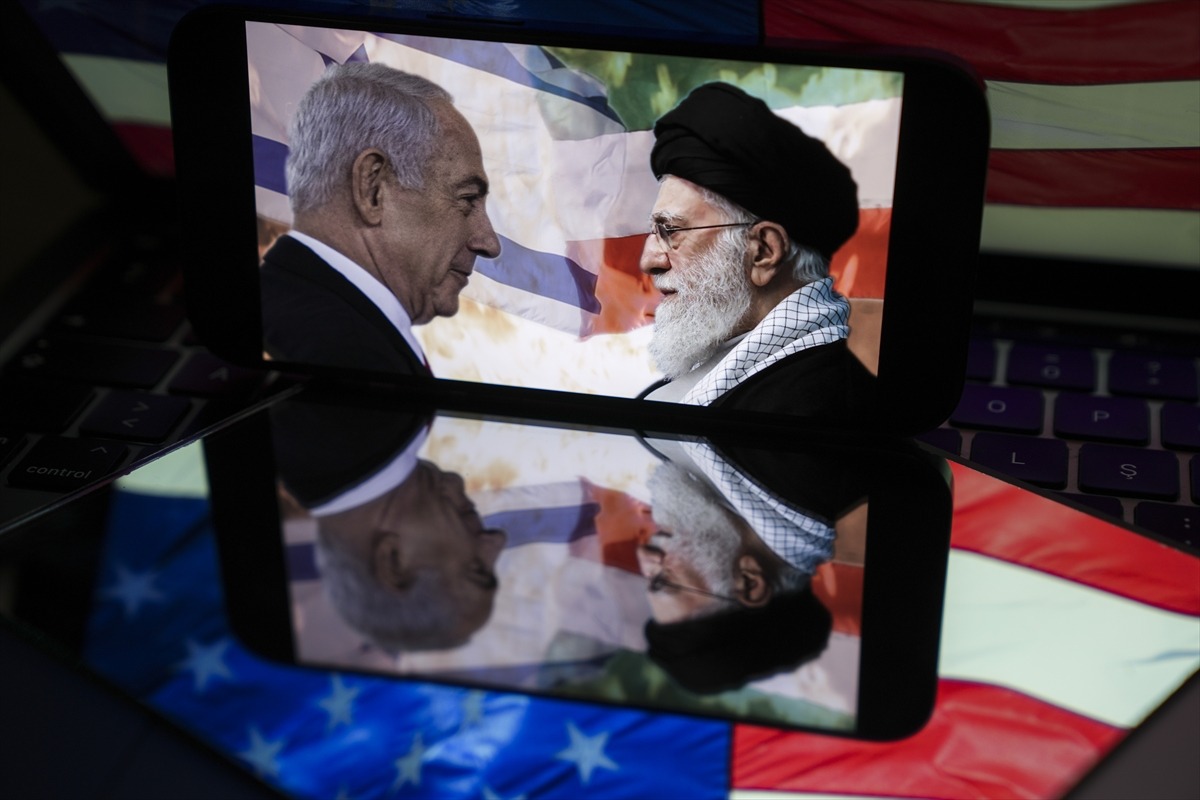
Although the 12-day Israel-Iran war appears to have concluded for now with a ceasefire through the intervention of US President Donald Trump, tensions in the region persist. This brief conflict has left many questions in its wake. Is the war truly over? Who were the winners and losers? Were Iran’s nuclear facilities really destroyed? Many questions are still being debated. We posed some of these questions to Retired Rear Admiral and Istanbul Kent University Lecturer Dr. Alaettin Sevim.
The US intervened in the Israel-Iran war on day 10 and by day 12, declared, “that’s enough, the war is over.” What is the significance of the US trying to enter and exit this conflict so quickly? Or was this a tactical maneuver or a diversion, much like Trump’s actions at the negotiating table?
In my opinion, America, and President Trump in particular, was not a strong supporter of this war. It did not want to intervene but was forced to do so. Consequently, an offensive was carried out in proportion to America’s technological sophistication and its weight in world politics. However, my belief is that this was a pre-notified offensive with minimized impact. This is based on the fact that the targeted nuclear facilities began evacuating two days prior, and even though this evacuation was observed and detected, the units supporting and carrying out the evacuation were not subjected to any attack. Similarly, I assess that Iran’s response to America—the attack on the air base in Qatar—also appears to have been a pre-arranged and mutually approved attack, given that it was pre-announced and targeted evacuated bases. Therefore, I believe that America, and President Trump in particular, did not want this war, that a limited intervention was carried out, and that this was met with an equally limited and pre-planned response, bringing the war to a ceasefire for the time being.
Do you believe this conflict has ended and that the ceasefire between Israel and Iran could be permanent? Or were the parties simply sizing each other up for the next conflict?
I believe it [the ceasefire] will hold for a while. The main determining factors here will be whether Iran continues its nuclear program and how much pressure Netanyahu might be under domestically in Israel. These are important issues. I believe these were the fundamental reasons for the war breaking out in the first place. If a de-escalation can be achieved on these fronts, I assess that the ceasefire will continue for at least some time.
There was constant talk of the conflict escalating into a regional war. In this context, a scenario like Iran closing the Strait of Hormuz was also mentioned. Do you see such a risk? Or do you think the risk of Hormuz being closed has passed for now?
The closure of the Strait of Hormuz by Iran could only happen if Iran is in a very difficult position and has no other choice left. What could that entail? For example, if Iran’s oil facilities are hit, its ability to export oil diminishes, the regime is endangered, the Iranian government is threatened, uprisings begin, and Iran is left with no other option, then the closure of the Strait of Hormuz by Iran could be on the table. Otherwise, it would be like shooting itself in the foot. The closure of the Strait of Hormuz would also affect Iran’s own trade. It is clear that its oil product shipments, especially to China, would be blocked. This is something that Iran and its allies would not want. Therefore, I assess that the closure of the Strait of Hormuz could only be considered at a point where the war has escalated significantly and Iran, having no other recourse, is willing to risk everything. I do not see this as possible in the near future.
In the Israel-Iran conflict, air forces and missile capabilities were the focus. However, important maritime trade routes from Hormuz to the Red Sea were also on edge. Could this have triggered tensions where navies might take the stage?
Yes, a key feature of modern warfare is the absolute necessity of air power. You cannot end a war with air power alone, but you will certainly lose a war without it. It has become clear that you must develop your air power in line with your objectives and your ability to deploy it against enemy air forces.
As for navies in the region, they are already on the stage. Navies have always had a presence in the region in recent times. They are still present. Depending on the escalation of the crisis, an increase in the naval presence in the region is possible. For example, in the most recent American offensive, cruise missiles launched from submarines were used. Therefore, we must always bear in mind that America and other nations have a visible and invisible naval presence in the region at all times, and that this presence can increase or decrease depending on how the crisis develops. But a naval presence will always continue in the region, whether through bases or through invisible assets like submarines.
How do you think China and Moscow viewed these interventions by the US and Israel? Can it be said that these two capitals were caught in a dilemma: trying to avoid a confrontation with the US while also protecting their ally?
It appears that Russia may have made some effort to limit the American intervention. Russia’s recent statements, in particular, have been noteworthy. For example, they stated that they had been informing Israel for a very long time that Iran did not have any capacity to develop nuclear weapons. Furthermore, Putin’s statement that the US intervention would affect regional and even world peace was also remarkable. China’s public statements, at least the ones we’ve seen, remained more low-key compared to Russia’s. But as an important ally of Iran, we see China taking Iran’s side, at least at the level of official statements or public declarations of support. Here, I assess that Russia, in particular, may have been trying to persuade America behind closed doors.
In conclusion, I assess that Israel gained an advantage through the damage it inflicted on Iran’s infrastructure and nuclear capacity, but that Iran won by not losing the war. I believe that Iran’s capacity to respond to Israel—its capacity for reaction—was underestimated, and it was a mistake not to consider that it could retaliate for such a long period, even if with long-range missiles. For this reason, in my opinion, Iran is considered a winner for not having lost this war.
Interview
Retired Vice Admiral Kadir Sağdıç: ‘Closing Hormuz would benefit the US-Israel’
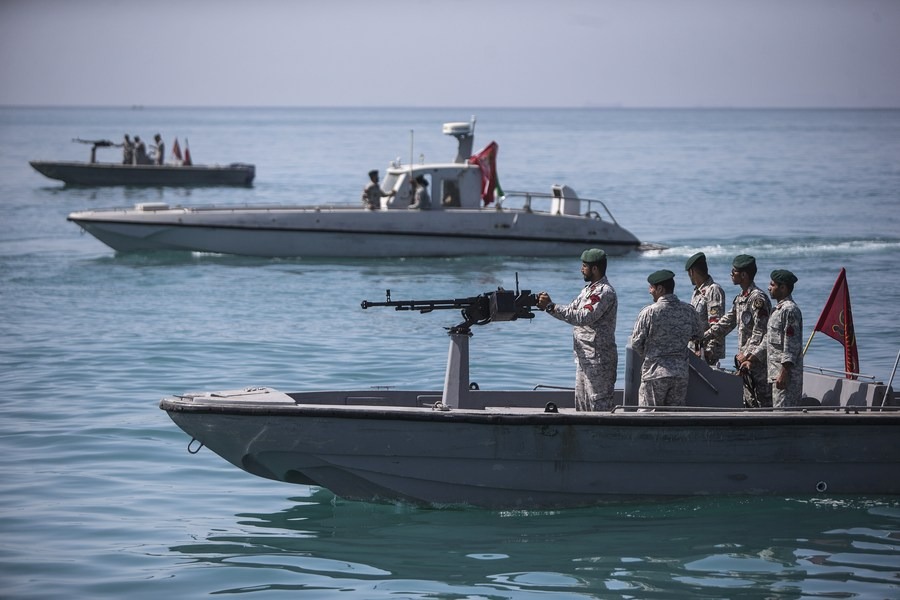
Retired Vice Admiral Kadir Sağdıç previously served as the Head of the Planning Group for BLACKSEAFOR (Black Sea Naval Cooperation Task Group), a multinational naval force established to enhance maritime security and cooperation among the Black Sea littoral states. In 2009, as the Southern Sea Area Commander, he was in charge of the naval command that managed Türkiye’s maritime security in the Aegean and Eastern Mediterranean. We asked Kadir Sağdıç about the developments and potential scenarios concerning the Strait of Hormuz: “Closing Hormuz would benefit the US-Israel.”
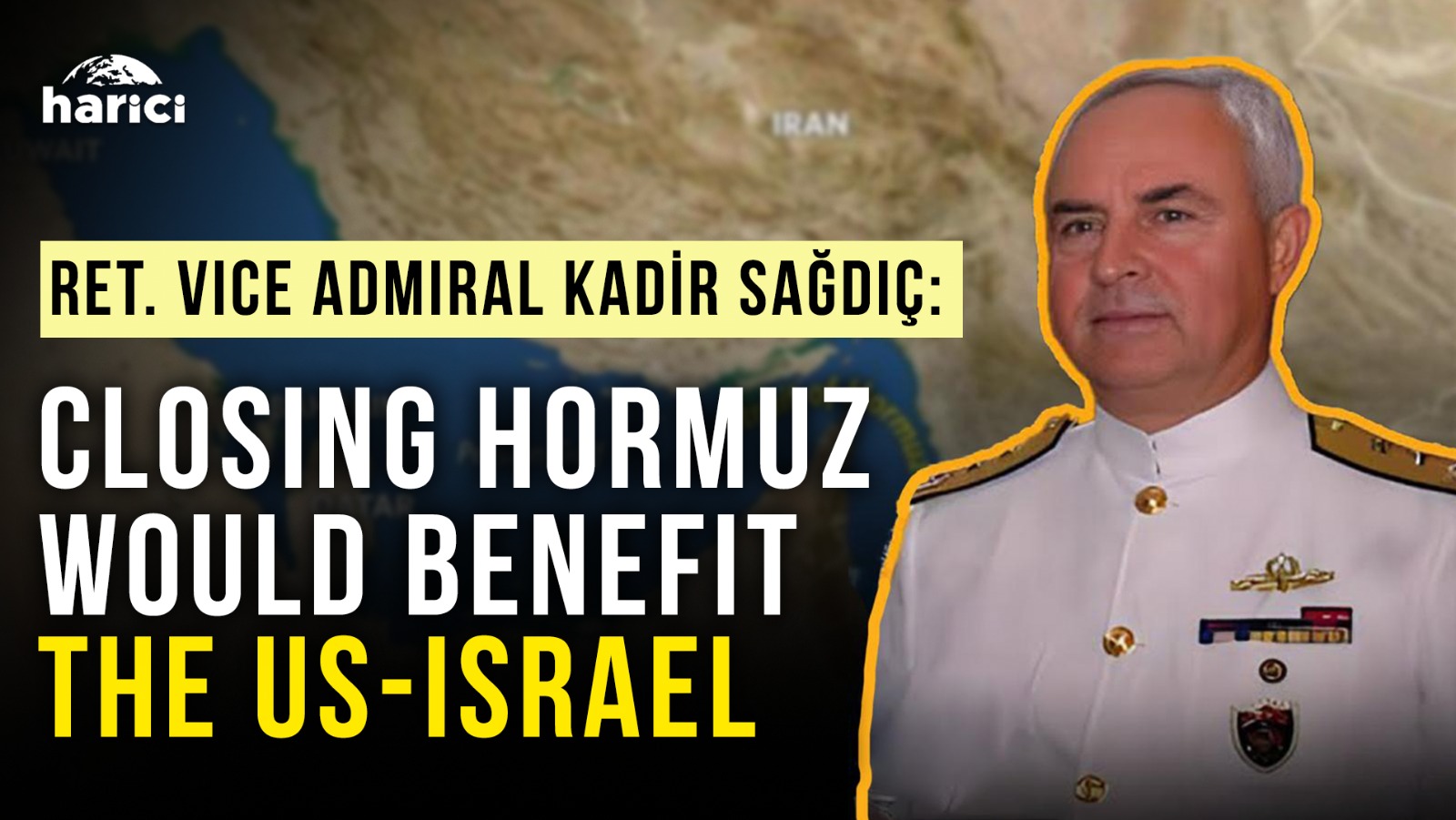
‘Not possible from the perspective of international law’
At what stage of a crisis could a scenario to close the Strait of Hormuz be activated? What is the legal status of the Strait of Hormuz? What drills and simulations has the Iranian navy conducted based on this scenario to date?
The Strait of Hormuz, like the Strait of Gibraltar or the Baltic passages, is an international waterway and is not very narrow. In fact, its narrowest point is 30 kilometers wide. It is not like our Turkish Straits; for instance, the Bosphorus is 700 meters wide. Hormuz is 40 times wider, and there are different countries on its opposing shores. There is Oman, Iran, and it is littoral to the United Arab Emirates and also to Qatar. In a place where so many countries are littoral parties in the same region, closing the Strait of Hormuz is not possible under international law.
The Turkish Straits have a special status. Both the Dardanelles and the Bosphorus Straits are very narrow, and both of their coasts belong to the Republic of Türkiye. Although the Black Sea is an international body of water with vast areas of 140 and 300 miles, the 12-mile territorial waters of the two countries [on either side of the Black Sea entrance] do not close off the sea. However, in the Turkish Straits, which include the Sea of Marmara, the Bosphorus, and the Dardanelles, all coasts and the internal waters belong to Türkiye. Therefore, the Turkish Straits have a special status under the Montreux Convention. But the Strait of Hormuz has no such special status. In such a situation, yes, during past crises like the Iran-Iraq War, Iran took the initiative to strike tankers to disrupt traffic. But in doing so, it assumes the risk and must bear the consequences itself. It does not do this by taking refuge in international law.
‘Revenue from China would be cut off’
In military literature, we call it a situation assessment. Before making a decision, we run it through a test. This involves three stages: suitability, feasibility, and acceptability. Let’s look at the Strait of Hormuz from this perspective. If Iran attempts to close it, what does Iran gain? Would closing Hormuz serve its purpose? That’s what we need to look at. For example, if it succeeds in closing it, it would draw attention to the economy, because petrol and natural gas costs would rise. At a time when the world economy is going through difficulties, it could draw the world’s attention to Hormuz via oil. This could provide a modest benefit, as if to say, “Pay attention to me, protect me, let the crisis de-escalate, and respect my rights. In return, I won’t close the strait.”
But if oil and natural gas prices increase, speculators will be the ones to benefit. You [Iran] cannot benefit in the long run. Eventually, even if the crisis turns into a war, it will subside at the end of the war. Therefore, for a sustained increase in oil prices, cartels like OPEC and others must make a collective decision. Supply in that region doesn’t just come from Iran. There are many players in oil supply, primarily countries like Saudi Arabia, Qatar, and Kuwait. Therefore, unless OPEC makes a lasting decision, oil prices will not remain high. They will rise during the crisis and then fall. Iran also sends its own supply to the world market through the very strait it would close. It has a major buyer, China, with which it has long-term contracts. It would suffer losses from that as well. This action would not bring gains to Iran, but losses, because it would cut off the revenue coming from China.
‘Closing Hormuz would make Iran a target’
Would an Iranian military action to close the Strait of Hormuz grant the US a “legitimate” right to intervene under international law? Or would the US use this as a pretext to find a “legitimate” justification for an attack on the Iranian navy with an international coalition?
What other harm would closing the Strait of Hormuz cause? Iran would politically broaden its range of adversaries. While its current counterparts are Israel and the United States, if the strait were to be closed, numerous countries affected by this would target Iran, leading to a major political imbalance. In other words, the political pressure on Iran would mount significantly. It would have unnecessarily made more enemies, and its own sales would be disrupted. Iran would have to revise its current agreement with China, saying, “I will close the Strait of Hormuz now, but if I survive the war, I will supply you with this much at this price.” It cannot close the Strait of Hormuz without revising this agreement with China behind the scenes and persuading them.
So, let’s say the decision to close it is made, but is it feasible? Can it be done? Feasibility here means, will your military power—your ships, unmanned aerial vehicles, aircraft, and land batteries—have enough firepower to stop the traffic passing through that strait? When Iran makes a move, the countries whose ships would be hit—and ships from all over the world pass through there—will be affected. It’s not just the littoral oil-producing countries that provide the supply; third-party ships also transit. Therefore, when those ships are damaged, their nations’ forces may also reach the stage of using force as part of self-defense.
The injured parties may not legally target Iranian elements directly. The United Nations Security Council will condemn Iran for the damage caused to third parties and will take measures. This could go as far as the use of force. That is, it won’t just be a condemnation. An international coalition force, under UN resolutions, under Security Council resolutions, would likely intervene against Iran. This would greatly strengthen the hand of the US and Israel. An intervention by just two countries would suddenly become a multinational action under a UN mandate, necessitating the use of force against Iran. In that case, the feasibility of closing the Strait of Hormuz also seems quite low.
Let’s assume you have the feasibility and the power, and you decide to use that military power to close it. You don’t, but let’s say you do. Well, is it worth taking that much risk, losing that many assets, and being on the losing side politically? At a time when Israel and the US are pressuring Iran, is it worth turning a significant part of the world against itself, suffering damage from the coalition forces they would form, and losing additional strength? Can it bear this risk? I think not. Therefore, when we test the logic of Iran closing the Strait of Hormuz, closing it brings no gain. It neither has the operational capability—its forces may not be sufficient to close it against the world—nor is the risk acceptable. Therefore, I assess that if it acts rationally, Iran will not close the Strait of Hormuz.
On the other hand, an attempt by Iran to close the Strait of Hormuz does not, of course, give the US a direct right to intervene. The US would need to evaluate this through United Nations Security Council resolutions. If Iran directly targets a US ship or an American tanker, then of course the US, as the other party, would engage in self-defense and could respond in kind. But we don’t know how Iran would implement this. Furthermore, I have logically assessed that such a decision will not be made.
‘The crisis will remain regional’
In such a scenario, how would the Iranian and Chinese navies react? Would it have an escalating effect on military tensions in other critical waterways around the world, such as the Strait of Malacca? Do you see a risk of a conflict in Hormuz spilling over to the Red Sea via the Houthis and other critical trade routes?
The question of how the Chinese navy would react to tension and escalation in the Strait of Hormuz region is also on the agenda. At this stage, China might react differently in its own vicinity, such as Taiwan and the China Seas. If a crisis develops there, it might launch a military operation. But I see no possibility of the Chinese navy participating in an operation in the Gulf region, in the Strait of Hormuz, or of China taking the initiative to intervene with armed force. There is no such probability. From what we have seen of China at this stage, I assess that it has no such intention in international relations. Increased tension here will have an effect on the Houthis, who have appeared to be aligned with Iran in the last year or two. Perhaps if Iran makes an attempt in the Strait of Hormuz, the Houthis could carry out similar actions in the Red Sea. I assess that a potential escalation in the Strait of Hormuz would increase Houthi activities. As long as the crisis and state of war continue, they might also undertake more advanced actions in the Red Sea.
I do not expect an intervention in other critical waterways, such as the Strait of Malacca, at this stage. However, if events escalate and blocs are formed—pitting the Eurasia “Heartland” [a geopolitical concept for the Eurasian landmass] of China, Russia, Türkiye, and Europe against the Oceania countries—meaning an intervention from the oceans (Pacific, Indian, and Atlantic) by the maritime-focused group led by the United States, the United Kingdom, Australia, and Canada (to which we should also add Korea and Japan)—then tension in the Strait of Malacca via countries like Indonesia and Malaysia could be possible. But this would mean the crisis has escalated to a global scale. This would be a very dangerous situation. I do not assess that it will reach that stage. I assess that this crisis will remain regional.
Interview
‘Freedom of thought in the US has never been under greater threat’
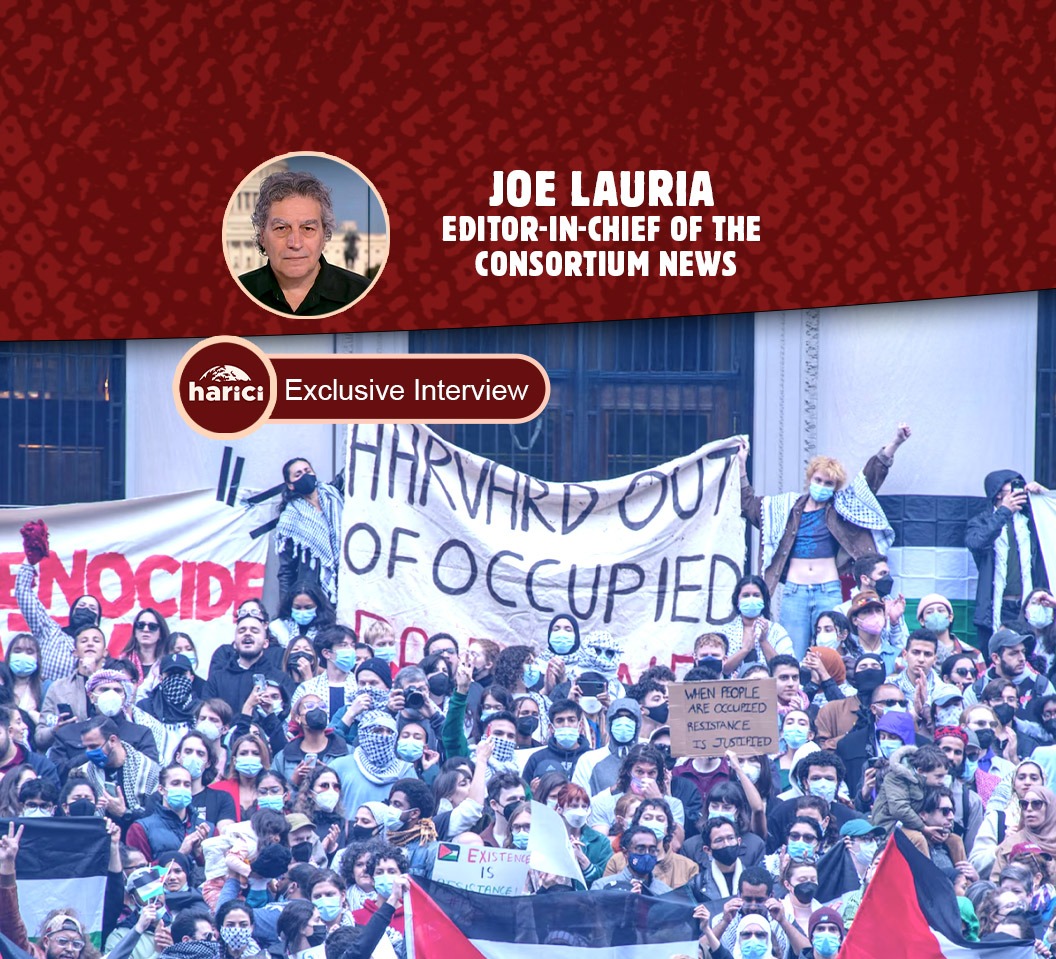
American journalist Joe Lauria, Editor-in-Chief of Consortium News, spoke to Harici: “Freedom of thought in the US has never been under greater threat.”
Joe Lauria is an experienced investigative journalist specializing in US foreign policy. Since 1990, he has worked for mainstream media organizations such as The Wall Street Journal, The Boston Globe, The Sunday Times (London), The New York Times, and The Washington Post. He currently serves as the editor-in-chief of the independent investigative journalism platform Consortium News. Lauria is the co-author of A Political Odyssey: The Rise of American Militarism and One Man’s Fight to Stop It, written with former US Senator Mike Gravel, and How I Lost By Hillary Clinton. The foreword to the second book was written by Julian Assange. In his journalism career, he has focused on issues such as US military interventions, intelligence operations, and press freedom. Lauria is the recipient of the 2017 Martha Gellhorn Prize for Journalism and the 2015 I.F. Stone Medal from the Harvard Nieman Foundation.
Joe Lauria answered Tunç Akkoç’s questions in an interview with Harici.
In your 2023 personal reflections, you mentioned Daniel Ellsberg, who risked his freedom to leak the Pentagon Papers. As far as I know, you also closely follow the Julian Assange and Edward Snowden cases. How do you assess the conflict between freedom of expression and national security? In your opinion, can the leaking of classified documents be justified when the public interest is served?
I absolutely believe that leaking classified information is the right thing to do, especially if it will end an unjust war. That’s what Daniel Ellsberg was trying to do by leaking the Pentagon Papers. And this idea of national security, especially in the United States, has very often been used as a kind of sham. It’s a way to protect the interests of powerful people who were involved in a terrible war like Vietnam. And even though they were losing the war, and they knew it, they refused to end that war. The Pentagon Papers were all about that. The government study Ellsberg participated in, which was supposed to be secret, showed that the US knew for years it was losing that war. Politicians and generals kept telling the American people and the world they were going to win. So many people, mostly Vietnamese but also American soldiers, were dying for nothing. But it was very difficult for them to withdraw politically from the war because they would look like failures, not just militarily but politically. And I think we’re seeing a similar situation in Ukraine right now.
But yes, someone who has these documents, like Ellsberg did, like Chelsea Manning did about the Iraq war, and finding a newspaper or an online publisher like WikiLeaks to publish these documents, is absolutely their right to turn the public against the government based not just on a political argument, but on facts that were hidden from the public. The Assange case was particularly dangerous because they went after a publisher. Now, in the US, we have the First Amendment [The First Amendment to the United States Constitution], and that basically allows you to publish any material under the First Amendment. But the Espionage Act contradicts the First Amendment because it says anyone who has unauthorized possession of defense or classified information is in violation of the Espionage Act. Now, Assange was a publisher, so he had First Amendment protection. But he was also technically violating the Espionage Act. So that law needs to be changed. In fact, that’s what he pleaded guilty to, which is why he was freed, because he said, yes, I broke that law, but I don’t believe the law is just. I believed I was protected by the First Amendment. That’s why I published the documents, he said.
So again, a government employee who signs a secrecy agreement, as they all do in intelligence agencies, by law, whether it’s the US Espionage Act or the British Official Secrets Act, they cannot give out the information. And we are living in a time of great repression, not just about classified information, but about any kind of information that goes against powerful interests. They are stopping people from speaking, particularly on social media. The government is using private companies to silence people who criticize Israel, especially right now and about what’s happening in Gaza. And this is even more serious than Daniel Ellsberg because it involves hundreds, maybe thousands of people, students speaking out on campuses. That Turkish woman arrested in Massachusetts, a student who wrote an op-ed, along with four other names, hers was the only name in the article.
When you compare it to the past, how do you assess the current state of freedom of expression in America? Have you seen a similar picture before?
It’s much worse today. Let me give you a quick example of how it was better in the past. It was never great. But I’ll give you an example of how much worse it has become. Fifty years ago, in the 1970s, I can’t remember the exact year, there was a journalist named Seymour Hersh, and he was given classified information or made aware of this attack in My Lai, a village in Vietnam. Where American soldiers killed dozens of innocent women, children, and all the men in a village. This was one of many massacres. But the American people didn’t know about it. It wasn’t in the newspapers. So a whistleblower went to Congress and then to this journalist and gave the information. The information was published, it became a huge scandal. They arrested and prosecuted one soldier, but he got out after a year or two.
My Lai was a civilian massacre in Vietnam in the 1960s. At that time, a whistleblower came forward, and Congress and the press listened to him. He was not punished at all. The journalist Seymour Hersh reported on this incident, got a job at The New York Times, and won a Pulitzer Prize. One of the responsible soldiers, Lieutenant Calley, was tried and imprisoned. Now let’s look at Iraq. The video known as “Collateral Murder” was leaked by Chelsea Manning to WikiLeaks. It showed US helicopter gunships firing on civilians in the streets of Baghdad. Manning was imprisoned for disclosing this information. The journalist who published the video, Julian Assange, has also been deprived of his freedom for years. But none of the soldiers in the video were prosecuted. So, in 50 years, the tables have turned: the whistleblower used to go free, now they go to prison. The journalist used to be rewarded, now they are punished. The soldiers used to be prosecuted, now they are immune. This situation clearly shows how much the American system and culture have regressed. Furthermore, the government’s use of private companies to restrict public speech on social media platforms is ongoing censorship. Freedom of expression on platforms like Twitter and Facebook is under serious pressure.
We are all aware of this now: thanks to social media, people have more of a voice than ever before. This threatens elite and powerful interest groups. In the past, this threat came from powerful, independent media, as in events like Watergate, which brought down Nixon. Today, however, ordinary people have a more effective voice than they ever had before. That’s precisely why there’s an extraordinary effort to silence these voices. But pay attention: This isn’t happening in the Soviet Union or China. It’s happening in the United States of America. Yet this is a country that should be a symbol of democracy and freedom of expression.
My next question is a bit more general but directly related to what you’ve been saying. Based on your book “A Political Odyssey,” how do you explain America’s interventionism that has been ongoing since World War II? What is the fundamental reason for the military-industrial complex, which we’ve been talking about for decades, being constantly fed by war? And do you think this cycle can be broken?
That’s a very big question. Firstly, I think American interventionism dates back much further than just post-World War II, even to the founding of the United States in 1789. In fact, this tendency began to show itself after the victory against Britain in 1787. At that time, the British had forbidden the colonies from crossing the Appalachian Mountains to seize Native American lands. Many American colonists did not want to accept this prohibition. This was one of the reasons for the rebellion—perhaps not the main one, but an important element. After gaining independence, the US engaged in a systematic war of extermination and expansion against indigenous peoples. This was truly a chain of territorial expansion and interventions.
Then came the Mexican-American War in 1846. Large areas within today’s US borders, like California, Nevada, New Mexico, and Arizona, belonged to Mexico at that time; they were seized through war. And of course, in 1898, the rising American Empire replaced the collapsing Spanish Empire. The US defeated the Spanish in places like the Philippines, Guam, and Puerto Rico; it even intervened in Cuba. This marked the beginning of America’s expansion on a global scale. So, this interventionist structure has existed in America from the very beginning.
However, a significant break occurred with World War II. We discuss this topic in detail in the book I co-authored with the late Senator Mike Gravel. In American history, many companies that produced weapons during wartime would return to their former businesses after the war. For example, firms that made sewing machines produced weapons during the war and then went back to making sewing machines. Even after the American Civil War, an army of one million was disbanded, and soldiers returned to their farms. So, the US never had a permanent army or a continuous war industry. But this situation changed radically after World War II. Because the Great Depression of the 1930s had largely ended thanks to the war. The war industry became the fundamental dynamic that pulled the US out of the crisis and made it the world’s largest manufacturing power. This is not the case today—Trump tried to bring it back, but it probably won’t be possible. At the end of the war, there was a strong motivation to sustain the military industry due to the fear that the economic depression would return. This motivation coincided with the US process of global expansion. Permanent military bases were left in the Pacific, Asia, and many parts of the world. Because the US was the only major power not devastated after the war. This effectively gave it the role of a global empire.
At this point, as Eisenhower also warned, we are talking about the beginning of a permanent military-industrial complex and America’s global empire. And we are still living within this structure today. Like all other empires, this structure will eventually collapse. But this collapse will not happen willingly; it will occur with back-and-forth steps, over time, and inevitably. Today, we see BRICS countries coming together to create a counterbalance to US imperial power. This perhaps signals the beginning of the end. It’s no coincidence that Donald Trump praised President McKinley in a recent speech. McKinley was the president during the period when the US fought against the Spanish Empire. Trump similarly carries a kind of “imperial nostalgia.” He wants to revive old power with tariffs, to return America to its 1950s manufacturing capacity. But this will not happen. This, in my opinion, is his pathological dream. The forces Trump represents have realized that US global dominance is nearing its end. Just like the old empires in Europe, America needs to understand that it must now turn its attention to its internal problems. For now, there is no concrete sign in this direction, but in my view, this transformation is inevitable. And we are currently at that very breaking point in history.
Now let’s come to today. Trump and the MAGA movement have repeatedly promised to dismantle the “deep state.” Do you think Trump can genuinely break the influence of the military-industrial complex? After all, he explicitly said so himself. What are your thoughts?
First, it must be said: the deep state denies its own existence. It’s even ridiculed with the claim that this concept is a “conspiracy theory.” But many of those who say this are actually part of those very structures. They don’t want to be seen; they want to remain deep. So, the fact that the “deep state” is now openly discussed, at least in America, is progress in itself. In other countries, these structures were recognized much earlier. In America, this structure was essentially established after World War II. With the National Security Act signed by Truman in 1947, the Pentagon, the National Security Council, and then the CIA were established. In 1950, the NSA [National Security Agency], whose existence was kept secret for a long time, emerged. So, the institutional foundations of the deep state were laid during that period. Whether you like Trump or not, one truth must be accepted: The Russiagate scandal was a fabrication from start to finish. It was a lie concocted by the Clinton campaign, and this lie was supported by institutions like the FBI. Leaking false news about your opponent in American politics is common; it’s called “opposition research.” However, when it came to Trump, this turned into a state operation. The FBI saw Trump as unpredictable, outside the system, and dangerous. He was an uncontrollable figure whose actions were uncertain. He was also someone who threatened the system. That’s why they tried to stop him. Trump realized this and developed a personal vendetta, especially against the FBI. Ultimately, Trump was both perceived as a threat to the deep state and was subjected to its interference.
Some noteworthy developments are currently taking place. Trump has appointed Kash Patel, an Indian-American, as FBI Director. Patel says he wants to close the FBI’s Washington headquarters and turn it into just a field office. This also includes a plan to transfer the budget to local law enforcement agencies across the country. If this happens, it would mean a serious shake-up of the Federal Bureau of Investigation’s central bureaucratic structure—and that would be a significant signal. Also, during the Trump era, some documents related to the John F. Kennedy assassination were released. These documents brought questions about the CIA’s role back to the fore. These could be seen as signs of a reckoning with the deep state. But despite all this, it’s hard to say for sure. Whether there will be truly lasting change is unknown. The structure we call the deep state has always found a way to survive. Even if Trump leaves, despite the damage done, the system is likely to be rebuilt—unless a fundamental structural transformation occurs. The point we have reached today is a period where intelligence agencies are influential enough to shape not only foreign policy but, at times, domestic policy as well. Therefore, we are at an extremely critical juncture in American history.
It should also be added: some believe Trump might genuinely be fighting against existing power structures. However, there’s another view—that even if Trump and his team dismantle the current deep state, they will establish their own “deep state” in its place. So, this could just be a different version of a power struggle.
Yes, you’re absolutely right. The system will most likely change, but it will be replaced by a structure controlled by Trump instead of the Democrats. There will still be a “deep state,” but in a different form. Because the current structure operates like a power above parties—it’s always there, regardless of who the president is or who controls Congress. There’s a strong example of this: About 10 years ago, the Senate wanted to declassify a report on the CIA’s torture practices following the Iraq invasion. This report revealed that the US had established secret torture centers worldwide after 9/11. Obama also openly admitted this, saying “we tortured some folks.” However, the CIA secretly accessed Senate members’ computers to prevent the report’s publication. This was a huge scandal, not just morally but legally. Because the CIA is prohibited from operating within the US—let alone spying on elected senators, which is a direct violation of the constitutional order. This incident clearly showed how powerful and untouchable intelligence agencies have become. As for Trump—he’s hard to define because we haven’t seen anyone like him before. He took harsh steps against the bureaucracy, weakened many institutions, and dismissed many people. But he often did this with day-to-day decisions, without a plan or long-term strategy. So, it’s uncertain whether he will feel the need to build a “deep state” behind him. However, if he has big goals—like buying Greenland, as he once mentioned—then he might need intelligence and military power, and thus a kind of deep state of his own. Therefore, the answer to the question of whether Trump would create his own deep state is: Yes, that’s quite possible.
Now let’s move from domestic policy to foreign policy. How realistic do you think are the expectations that the Trump administration will end US intervention in foreign wars? Does Trump truly represent a shift? Especially considering the comments many make about a “realist foreign policy” and a move away from the neocon line, how do you view these assessments?
Actually, not really—and that’s the problem. This time, there are no openly interventionist, neocon figures like John Bolton or Mike Pompeo in the Trump administration. However, Marco Rubio is Secretary of State, and figures like General Keith Kellogg are re-emerging. For example, Kellogg was previously dismissed and demoted, but now he’s trying to be influential in Ukraine policies again. Trump says things that sound good. He gives some messages that are anti-interventionist and intuitively correct. This aligns with the rising libertarian tendencies in America. There’s a particular vein that opposes foreign interventions, and Trump sometimes aligns with this. However, there’s still a serious gap between rhetoric and practice.
Trump says he doesn’t like wars and wants to end the war in Ukraine. But the real question is: does he truly understand the fundamental causes of this war? This was the point Vladimir Putin emphasized in his long phone call with Trump—this war won’t end unless the root causes are addressed. In America, however, these causes are hardly ever discussed. The mainstream media doesn’t bring up these deep-rooted reasons. Yet, at the beginning of the 2014 crisis, there was open talk about the unconstitutional change of government in Ukraine and the role of neo-Nazi groups—especially the Azov Battalion—in this process. US and British media had published major stories about these groups. It was stated that although their numbers were small, their influence was very large.
But now this narrative has been erased. Talking about neo-Nazis has almost become taboo. Again, there’s no longer any mention of President Viktor Yanukovych, who was confirmed as democratically elected by the OSCE [Organization for Security and Co-operation in Europe], being violently overthrown in February 2014. It’s like a chapter erased from history. We, at Consortium News, report on these overlooked fundamental causes. Because we voice these truths ignored by the mainstream media, we have faced censorship and various smear campaigns. Some circles even tried to label us as Russian propagandists—simply for reporting documented facts like the coup and neo-Nazis.
In December 2021, Russia presented some draft treaties to NATO and the US. Their demands were clear: withdrawal of NATO troops from former Warsaw Pact countries and removal of missile systems in Romania and Poland, which are only six minutes away from Moscow. There was concern that these systems could carry nuclear warheads. Russia explicitly stated that if these demands were not negotiated, it would take “technical-military steps”—and this resulted in the invasion of Ukraine. Although Russia’s 2022 attack is often presented as a “beginning,” according to Moscow, it was a continuation of a war that Ukraine started in 2014 with US support. So, does Trump really understand these facts? I don’t know. I don’t think so. He had long talks with Putin, and even his envoy Fred Witkoff went to Moscow several times. The Russians must have explained these issues—including NATO expansion—many times. Moreover, these objections don’t just belong to Putin; his predecessor Boris Yeltsin was also openly against NATO expansion, even their puppet Yeltsin. So, these objections have been part of Russia’s political line for over thirty years.
So, can Trump really end the war in Ukraine? To do that, he first needs to understand the fundamental causes of the war. Because the only way Ukraine can win this war is if NATO directly goes to war with Russia. However, NATO leaders are aware that this could lead to a nuclear catastrophe—so this option is not on the table. This means Ukraine cannot win. In reality, Ukraine has lost the war. The sooner they sit down at the table, the better their terms might be. But they continue to fight. Trump, at this point, remains ineffective. Yet he has the power to end this war. The US provides weapons, intelligence, and funding to the Ukrainian government. In fact, Ukraine has been largely sustained by American taxpayers’ money for eight years. Trump could stop the war by deciding to cut this support. But so far, he isn’t doing it.
The second issue is Gaza, and this is perhaps the worst. Trump is supporting a war crime of the most heinous kind here. Moreover, he completely misunderstands the issue. He’s from New York, like me—he comes from Queens—and he describes Gaza as if it’s a high-crime neighborhood. He talks about stabbings and muggings but never mentions the 2,000-pound bombs dropped on people’s tents, their forced displacement and subsequent bombing, or their starvation. Trump talks about helping the people of Gaza, but he plans to do this by removing them and building new structures in their place, meaning through ethnic cleansing. This doesn’t look like someone who wants to end wars—on the contrary, he’s exhibiting an attitude that condones the most serious human rights violations we’ve witnessed in recent years. Despite talking about non-intervention, he doesn’t practice it. Why? Perhaps he’s lost control. It seems he repeats the opinion of whoever he last spoke to. We often see this approach in his administration. Yet he should listen to realistic thinkers, even his own instincts. But he doesn’t.
You’ve been closely following and reporting on the Middle East for years, and you know the American perspective very well. So, in your opinion, does Trump’s Middle East strategy really fit into an understandable framework? Balances in the region are changing rapidly—the push to overthrow Assad, the genocide unfolding in Gaza, Israel’s increasing aggression… In light of all these developments, do you have a clear view of what kind of strategy Trump is pursuing in the Middle East?
Getting a free plane from Qatar, arranging real estate deals in Gaza and elsewhere when he leaves office—Trump’s Middle East “strategy” basically boils down to this. There are even rumors he has plans to build a tower in Dubai or Abu Dhabi. So, he doesn’t understand the Middle East; he only understands real estate deals. He has no idea about the region’s history. He can’t grasp the Palestinian issue. He still sees Gaza as a high-crime neighborhood in New York. He’s ignorant of fundamental historical facts like the role of Western Europe, especially Britain and France, in the post-Ottoman Middle East, the Sykes-Picot Agreement, and the establishment of Lebanon and Syria. He also doesn’t understand how the US took over regional dominance from Britain after the 1956 Suez Crisis and how it supported Israel as a proxy power. Today, the fact that Arab regimes are abandoning the Palestinians through the Abraham Accords is seen by Trump as “peace.” Yet the result was the catastrophe in Gaza—a process that essentially laid the groundwork for genocide.
No one is taking action except the Yemenis—including your president [referring to Turkey’s president]. He constantly says nice things, but as far as I know, he’s still sending oil to Israel. As for Trump, what primarily motivates him is his personal wealth. He defends Israel because he received $100 million from the Israel lobby, especially from the late wealthy donor Miriam Adelson. Like many American politicians, he instinctively tends to defend Israel no matter what. However, a break is now occurring. More and more people are raising their voices because Israel’s practices of genocide and ethnic cleansing are completely out in the open. They are no longer hidden or concealed. Those making these statements are far-right figures in the Israeli government. These individuals, once considered marginal, Kahanist-line figures [followers of Meir Kahane’s extremist ideology], are now in power. And they are trying to realize the dream of “Greater Israel.” What we are witnessing in Gaza is the most extreme point of this process—literally an attempt at a “final solution.” So, what is Trump doing in the meantime? He’s dreaming of a golf course in Gaza. We’re talking about a situation this pathological.
-
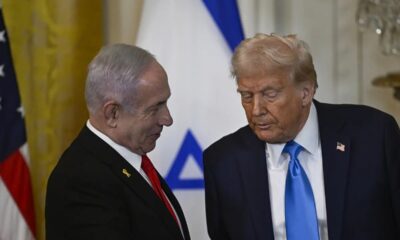
 Middle East2 weeks ago
Middle East2 weeks agoUS to launch major bombing campaign against Iran this weekend, Hersh reports
-

 Asia2 weeks ago
Asia2 weeks agoIran-Israel war: Why US discusses regional conflict with Pakistan
-
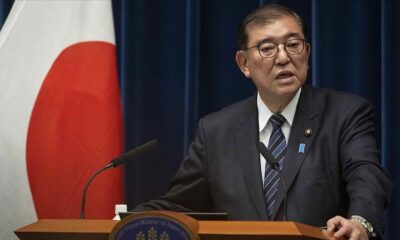
 Asia2 weeks ago
Asia2 weeks agoJapan diverges from G7, urging restraint in Israel-Iran conflict
-

 America2 weeks ago
America2 weeks agoIsrael’s nuclear arsenal used as a tool of blackmail, says expert
-

 America2 weeks ago
America2 weeks agoUS to require foreign students to make social media profiles public for visas
-

 Europe2 weeks ago
Europe2 weeks agoProtests erupt in Ireland over plan to end military neutrality
-
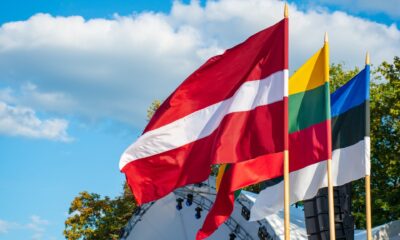
 Europe2 weeks ago
Europe2 weeks agoMass evacuation plans: War and the ‘self-fulfilling prophecy’ in the Baltic region
-

 Diplomacy2 weeks ago
Diplomacy2 weeks agoNATO chief introduces ‘DOGE’-style reforms ahead of Trump summit


